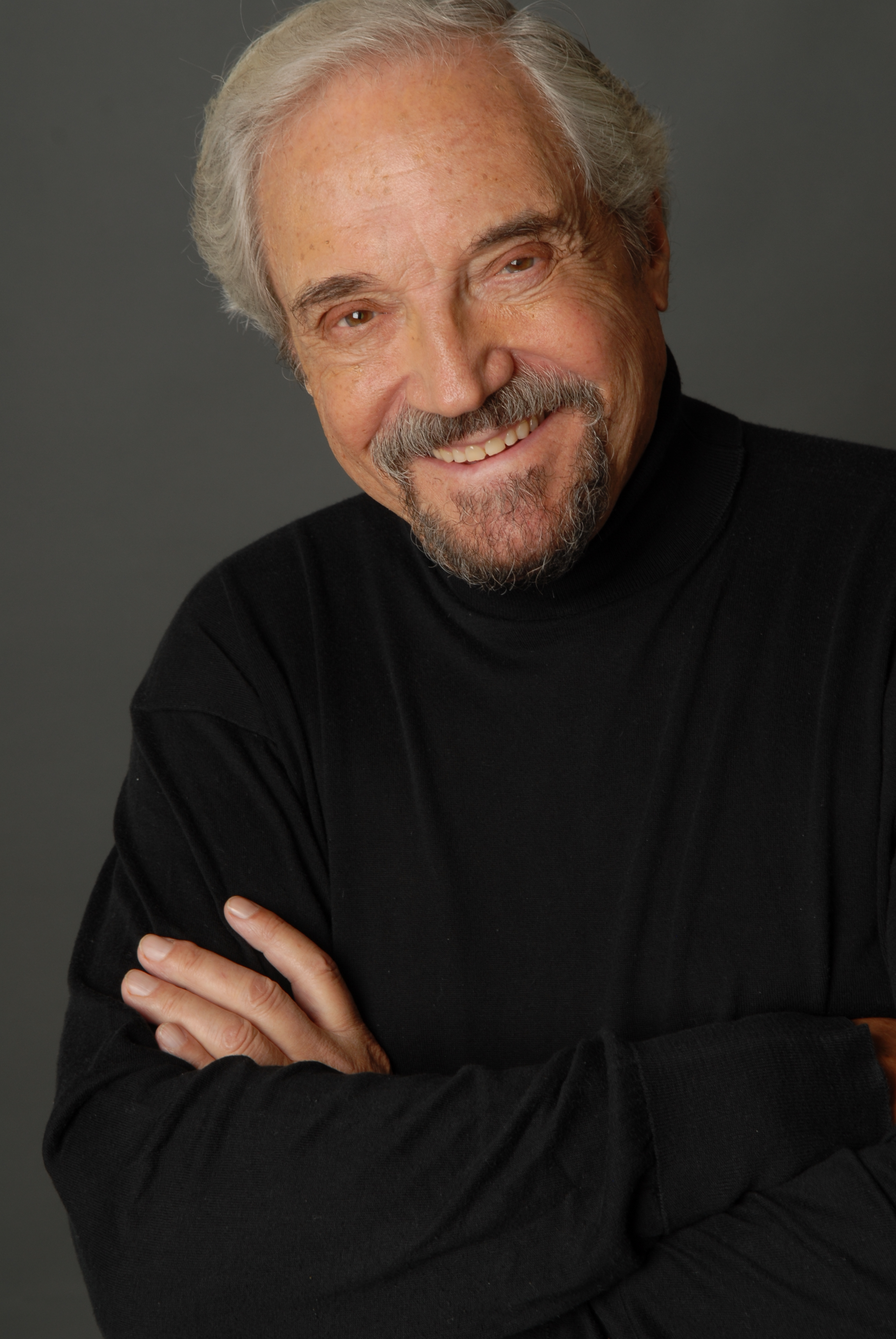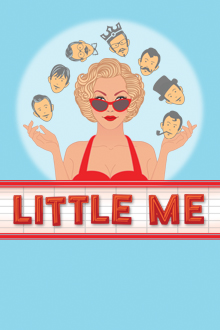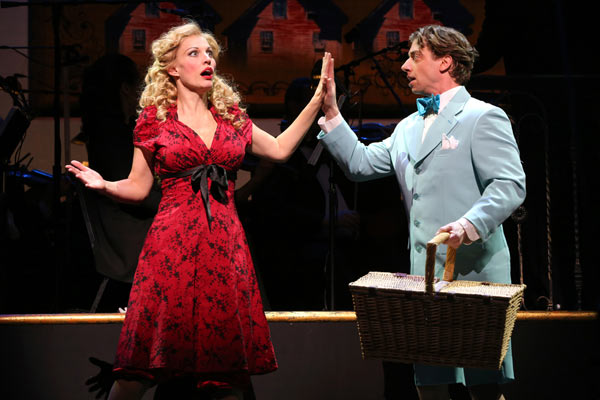Bringing up Gabey.
A review of the revival of
ON THE TOWN
At the Lyric Theater
October 21, 2014
by Moshe Bloxenheim, Guest Reviewer
When the house lights dimmed in the Lyric Theatre on 42nd Street and the audience hushed expectantly, no strains of Bernstein rose from the orchestra pit – instead we heard the stately notes of the “Star Spangled Banner.” Ours was doubtless not the first performance where everyone looked at one another in confusion, but soon enough all rose from their seats, hand over heart, and began to join in singing the National Anthem – first unsure of themselves but finishing the first stanza in full. It was only then that the curtain – itself a large US flag – rose and the show began.
A cynical scheme to make sure no one could hate this show?
No, we are traveling back to 1944 and wartime when New York was truly part of the Home Front and all theater performances started off with this tribute to our embattled country before taking the audience away from the grim realities of battle news, casualties, blackouts and rationing.
Happily there is no rationing or actor shortage in this revival of ON THE TOWN. Nicely cast, cleverly staged and lushly orchestrated, the new production is an enthusiastic valentine to a bygone New York City: a glorious eyeful and earful that goes far to please the audience.
The premise of ON THE TOWN is simple: Ozzie, Chip and Gabey are three US Sailors who have 24 hours leave in New York City before they ship out. As they ride the subway from the Navy yard, Gabey sees a picture of the latest month’s “Miss Turnstiles” and longs for the exotic young lady who has been so honored by the New York City Board of Transportation: Miss Ivy Smith. The three young men agree to split up and use clues from the Miss Turnstiles poster to locate her. As they search, Chip meets the delightfully direct ex-cabbie Hildy Esterhazy and Ozzie encounters a soul-mate in the volatile anthropologist Claire de Loone. But poor Gabey must endure many more obstacles before he can meet the Ivy Smith of his dreams.
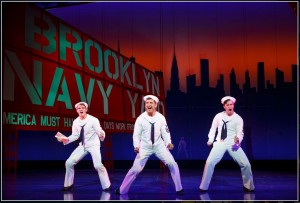
Jay Armstrong Johnson, Tony Yazbeck and Clyde Alves
These three young men and three young ladies may be the lead roles, but the starring spot is reserved for the setting of ON THE TOWN itself; the big, confusing, often tawdry New York City that even in wartime offers a magic wonderland that beats the organized, rational happiness of Disneyland hollow.
To populate such vibrant metropolis, the company has to be large by necessity and many performers play multiple roles: exiting as one citizen of the fair city and reentering the scene as another different character, each one with his or her own story to tell, be they sailor, cop, schoolgirl, commuter, lover or employee of Mr. Godolphin. Such careful delineations are certainly due to the efforts of the director and the choreographer, but a long and hearty ovation surely must go to these actors who never devolve into walking stage properties.
One of these many-faceted players is the very talented Mr. Stephen DeRosa. He plays a motley series of individuals and the spectator is hard put to recognize the tired shipyard worker, wise guy bill poster, harried professor, hackneyed club hosts, etc., as one and the same person even though Mr. DeRosa often adds his own funny touch that makes the most of each individual.
Mr. Phillip Boykin is another skillful actor who adds to the multitude, with his warm booming voice and the ability to go from the sleepy worker who memorably opens the show to the campily shrill announcer for the Miss Turnstiles contest and finishes off as a gritty Coney Island carny.
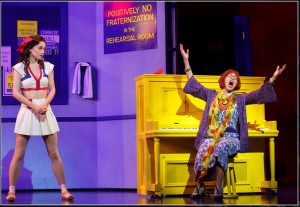
Megan Fairchild and Jackie Hoffman
If other actors are giving us a remarkable parade of the New York public, Ms. Jackie Hoffman gleefully rounds up her various personalities to show how many people can be a singular pain in the neck. Whether she is a crotchety Old Lady who objects to our heroes or becomes each of the various club singers who must moan the most inconveniently depressing of songs, Ms. Hoffman is hell bent on demonstrating how ruining everyone else’s fun can be a grand activity, especially when she is playing the chief obstacle between Gabey’s and Ivy’s meeting: the dipsomaniacally mercenary singing teacher Maude P. Dilly.
Though Mr. Michael Rupert only inhabits one role –Judge Pitkin W. Bridgework – he makes the most of this slowly building gag who is Claire’s relentlessly understanding fiancé. For the good Judge, realism is not worthy of a hearing.
Just as gratifying in her small, but vital part is Ms. Allison Guinn as the definitive drip and third wheel, Lucy Schmeeler.
So what of our sailor’s and their ladies?
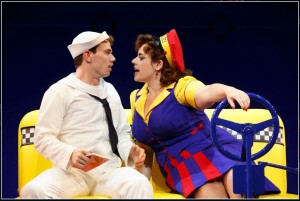
Jay Armstrong Johnson and Alysha Umphress
The cutely handsome Mr. Jay Armstrong Johnson definitely gets a merit badge for his performance as the boy-scoutish Chip, who wants to see the big city but is there for his pals. One can easily see why Hildy is determined to get this Sailor away from his guidebook. Not that sensible Chip can resist Hildy for long, and who can blame him? The marvelously named Ms. Alysha Umphress provides a deliciously voluptuous and direct young lady who knows what she likes and is happy to let us all in on the secret. Vocally Ms. Umphress belts her numbers with a wonderfully knowing air that makes her singing “I Can Cook Too” one of the highlights of the evening.
In direct contrast to Hildy is Claire de Loone: she also knows what she wants, but is trying to make do with what she believes would be better for her – such as her fiancé Judge Pitkin W. Bridgework. But deep down Claire knows that better isn’t always best. She is a healthy mademoiselle who tries desperately to maintain a cool, intellectual facade only to give way to vigorous explosions of enthusiasm as she amusingly explains in the whimsical song “Carried Away.” Unfortunately Ms. Elizabeth Stanley never quite strikes the balance between a vessel of simmering passions about to hilariously blow her top or a cartoonish basket case who is dangerously close to putting her carefully manicure index finger to her rosy lips and going Bliblbliblblibl… Still, when avoiding the outright caricature, Ms. Stanley’s Claire can be quite a girl.
Ozzie might get carried away too, but the excellent Mr. Clyde Alves keeps it all in fun and avoids psychiatric undertones. Here is a likeable fellow who might get a bit full of himself but his reaction to the overwhelming Claire shows that he has a thing or two to learn.
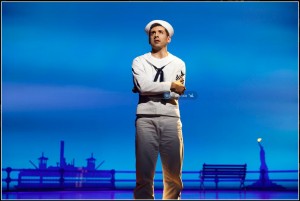
Tony Yazbeck
As a farm boy from the Midwest, one might think the innocent Gabey would have a LOT to learn, but in spite of all his friend’s advice, Mr. Tony Yazbeck’s sweet and boyish Gabey does better relying on himself. From the moment he falls for Miss Turnstiles’ poster, Gabey has everybody rooting for this heart-struck young man. A one dimensional character would be hard put to convey the helpless loneliness of “Lonely Town” or the jubilation of “Lucky to Be Me,” let alone bring the audience along in Gabey’s nightmarish fantasy search of “Imaginary Coney Island.” Yet, Mr. Yazbeck makes it all feel real.
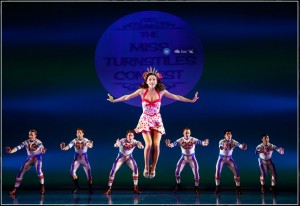
Megan Fairchild and the cast of On The Town
Happily for Gabey, Ms. Megan Fairchild’s Ivy Smith is just what he needs – a nice and pretty girl who is far from the exotic creature that was conjured up by the Miss Turnstiles campaign. Ms. Fairchild can soar in a fantasy ballet and do a Miss Turnstiles strut, but her Ivy is a likeable down-to-earth person who is more than a little bewildered by everyone else’s expectations for her and she proves a droll foil for Ms. Hoffman’s conniving Maude P. Dilly.
Such a big cast could easily engulf a less carefully thought out stage, but Mr. Beowulf Boritt provides a mix of sets, curtains, moving panels and projections that is well worth seeing on its own merit. Under the expert lighting of Mr. Jason Lyons, streets rush by, clubs spring up, subways hurry through a fantastic city that can seamlessly expand to handle the show’s biggest dances and contract to focus on the most intimate moments. This is ON THE TOWN’s native environment and everyone and everything involved seem to belong here and take sheer joy in the energy and motion of the show – even the Status of Liberty’s torch, which would have been blacked out during the war years, beams approvingly over the goings on.
If Messrs. Borrit and Lyons provide the world of 1944 New York, then the costumes, hair and makeup designs of Mr. Jess Goldstein, Ms. Leah Louks and Mr. Joe Dulude II do a fine job of filling the streets with believable 1944 New Yorkers, strikingly imaginary people for the dream ballets, eye-catching carnies and lots and lots of handsome sailors.
On the whole the direction is quite good with Mr. John Rando effectively keeping the development of the characters and their situations flowing smoothly and enjoyably. Unfortunately Mr. Rando does not always know where the fine line lies between the believably funny or the flatly cartoonish. There are, of course, downright caricatures like Judge Pitkin W. Bridgework and Maude P. Dilly where any degree of actuality would ruin the fun, but I somehow wondered if Director Rando had something to do with poor Claire de Loon’s operatic excess. Also Hildy’s speedy moderation of her initial “Duh Bronx” accent with its “Youse” and “Dese” inflections to a more pleasing enunciation show how much this was just a sloppy and unnecessary gimmick to establish character.
But I thought Mr. Rando’s staging had one misstep which went beyond funny-papers “haha” to downright crude: When the Announcer of the Miss Turnstiles competition struggles to relieve the unwilling Ivy of her crown at the end of the month, he looks like he is ripping it off her hair.
It is unfortunate that such lapses are there for both the actors and the audience to endure, but they are happily outnumbered by Mr. Rando’s better choices, Adding to the plusses, Conductor James Moore, the orchestra and the singers clearly appreciate Mr. Leonard Bernstein’s music and (Assisted by Mr. Kai Harada’s subtle sound designs) give it a glorious sound. Ms. Betty Comden and Mr. Adolph Green provided the lyrics as well as a fun book and, along with Mr. Bernstein, convey their own youthful enthusiasm for New York and life and optimism about the future. The songs are gems and more than a few are classic hits starting with the unforgettable “New York, New York (a helluva town).” From the blissful “Lucky to Be Me,” to the endearingly raunchy “I Can Cook Too,” to the sweeping ballet pieces, and the heartfelt “Some Other Time” it is clear that even in their twenties Ms. Comden and Messrs. Bernstein and Green could cover emotional and dramatic ground with a skill that seems harder and harder to find in modern musicals.
ON THE TOWN is a show that was inspired and in part developed by the legendary Mr. Jerome Robbins. Choreographer Joshua Bergasse understands this heritage, giving us a city where dance inhabits every onstage motion without any air of “art for culture’s sake”; it is often funny, frequently beautiful and more than one moment brings a lump to the throat.
With all the people and sets that must pass on and off the stage in such a smooth and continuous progression, it would be ungrateful not to offer up an extra round of applause to the Production Stage Manager Bonnie L. Becker. I bet her backstage work with its split second timings of cast and properties would be another fascinating performance to behold.
At any rate what is offered on stage is a true jewel of Musical Theater. It may not be a flawless pearl, but ON THE TOWN is still to be valued and delighted in.
————————————————————————-
Leaving the theater I was left with an interesting question; how many people below a certain age would now see ON THE TOWN as anything but three goofy sailors who have left their ship for a day?
When ON THE TOWN opened in 1944, the musical had dramatic undertones that were felt by everyone whether onstage or in the audience: At the end of their 24 hour leave, these three sailors who had already undergone combat would be shipped off once more to a possibly dangerous destination from which they may never return. Additionally, the three girls were discovering themselves in a world changed by war and no one knew what the outcome would be even at home. Even after 1945, further unrests in the world and the possibility of the draft must have lent the show’s final moments poignancy that I fear many of today’s younger people must miss – living as we now do in a compartmentalized world where the US can be fighting wars that have far less affect back at home than they once might have had. Who would have the nerve these days to talk of a home front or ask anyone to make sacrifices for our nation’s good?
I began my review by mentioning how the show attempted to evoke 1944 by the singing of the National Anthem. Perhaps the sense of those uncertain times could have been enhanced by the addition of one more lighting effect to the dazzling array of projections: a discreet image of World War II news sliding across the Times Square News Ticker.
One more notion: Although it might ruin a desired measure of surprise for the show, I think it would be a little more respectful to both the audience and the National Anthem if everyone had fair warning that the “Star Spangled Banner” was imminent before they got to their seats. It just isn’t something one ought to spring on people.
————————————————————————-
On the Town Tickets
ONLINE AT TICKETMASTER.COM
BY PHONE (877) 250-2929
or at the
BOX OFFICE
Lyric Theatre 213 W 42nd St, New York, NY 10036
RUNTIME
The performance is 2 hours 30 minutes, including one 15-minute intermission.
MOBILE LOTTERY
Visit TodayTix for a chance to win same-day $20 tickets from your phone.
ENTER NOW

About the reviewer:

I am a computer programmer, wannabe writer who loves theater and just got into the habit of inflicting my theatrical opinions.
I live in New York.
Moshe can be reached at MB1224@aol.com










